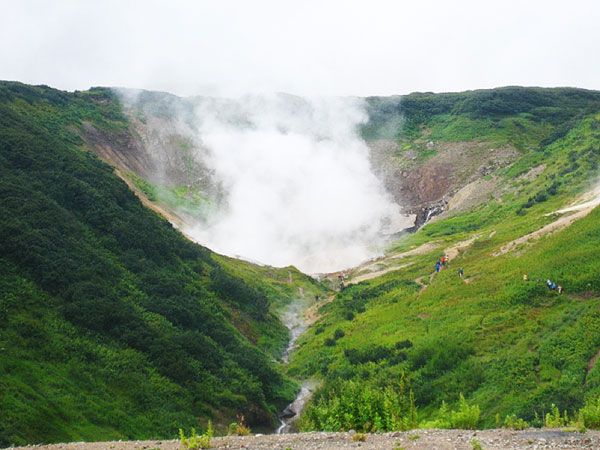Scientists Watch Hot Spring Microbes Become Two Species

A Russian hot spring is gaining new inhabitants: The microbes that live within its acidic, near-boiling water appear to be in the process of splitting into two species, a new study indicates.
The researchers found that some hot-spring-dwelling microbes known as Sulfolobus islandicus appear to be separating into two groups that are exchanging less and less genetic information between themselves.
This is evidence they are speciating, or becoming separate species, the researchers argue.
"I think it's just showing species are real in microbes," said study researcher Rachel Whitaker, an assistant professor of microbiology at the University of Illinois at Urbana-Champaign. "There has been a big debate as to whether or not there is such a thing as 'species' in microbes and whether or not it matters."
The concept of a species is not as straightforward as it sounds. Among organisms that reproduce sexually — that is, by exchanging genetic material to make babies with traits from both parents — a species is often defined by an organism's ability to mate to produce fertile offspring.
Microbes don't mate. Sulfolobus islandicus belongs to a group known as Archaea, one of three domains of life, and like other bacteria and archaea, Sulfolobus reproduces by cloning itself. However, there is an exchange of some genetic information, even though it's not as part of reproduction, according to Whitaker.
Whitaker and her colleagues knew that the population of Sulfolobus islandicus living within a single hot spring in Kamchatka, in far eastern Russia, showed more diversity than at similar hot springs, including those in Yellowstone National Park, so they decided to take a closer look.
Sign up for the Live Science daily newsletter now
Get the world’s most fascinating discoveries delivered straight to your inbox.
Based on genetic markers, they selected 12 different strains of the microbe and sequenced their genomes. The results revealed a pattern of genetic sharing, in which members of two groups shared more information with members of their own group and less with members of the other group.
This led to another question: Were the two groups moving together or diverging into two species?
Using a technique developed by study researcher Xavier Didelot of the University of Oxford, they looked at the microbes' genetic history and determined the amount of shared genetic information had decreased over time – a sign the two groups were moving apart.
When they looked more closely, they found the differentiation between the two groups were concentrated in certain regions of the genome.
The researchers aren't sure what is driving the microbes apart, but based on growth patterns demonstrated in the lab, they speculate that the microbes inhabit slightly different niches within the hot spring.
"This is where the sense of scale for microbes becomes important. It is a small hot spring, but it is the world to these little guys," Whitaker said, pointing out that it's possible they might live in places with slightly different oxygen concentrations, for example.
The research was published today (Feb. 21) in the journal PLoS Biology.
You can follow LiveSciencesenior writer Wynne Parry on Twitter @Wynne_Parry. Follow LiveScience for the latest in science news and discoveries on Twitter @livescience and on Facebook.











